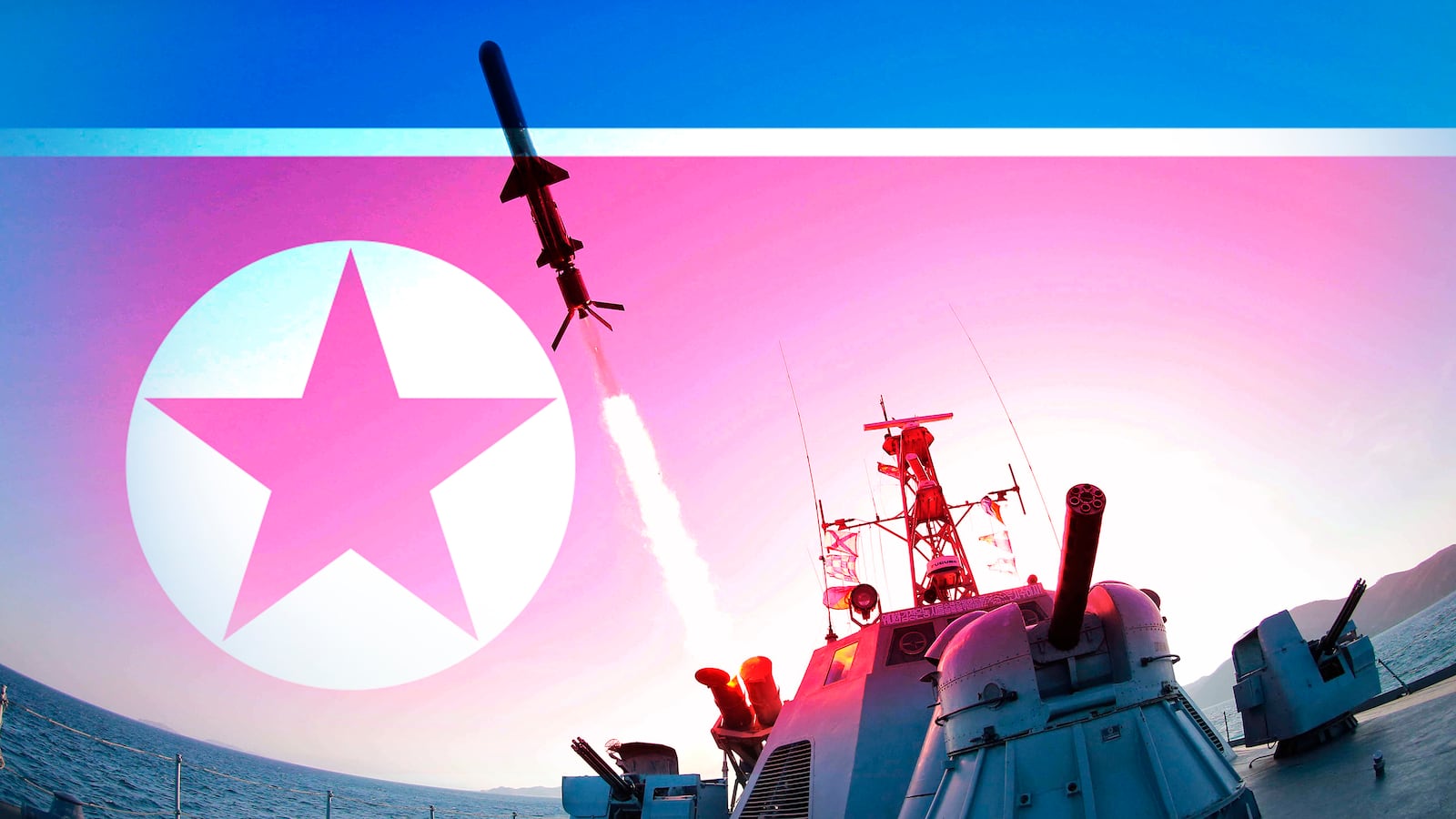Increased activity at the Kim regime’s Sohae launch site suggests North Korea will soon test a long-range launcher, perhaps its 80-ton booster, developed with Iranian money, or, equally disturbing, the KN-08 missile.
The timing may not be a surprise—Pyongyang’s nuke and missile tests occur in close succession, author Bruce Bechtol Jr. told The Daily Beast after the North’s Jan. 6 nuclear detonation—but most everything else about the test will be a mystery.
The North Koreans have taken great pains in recent years to hide preparations. Last year they finished constructing an assembly building near the launch pad at the Sohae complex. They also built underground fuel tanks at the site, further shielding activity there.
Until now, every long-range North Korean launcher has been liquid-fueled, but that could change this month. “North Korea is close to launching a long-range, solid-fuel, mobile missile capable of reaching the United States,” Joseph DeTrani, who held various high-level North Korea-related posts in Washington, wrote Jan. 19 in The Washington Times. There is only one missile in Pyongyang’s inventory that could possibly fit that description: the fearsome KN-08.
Up to now, analysts were sure the KN-08 was liquid-fueled, because as Richard Fisher of the International Assessment and Strategy Center noted in email comments to The Daily Beast, “it resembles a known Soviet-era liquid-fuel missile, the tech for which North Korea obtained in the early 1990s.”
If, however, the missile has a solid propellant, as DeTrani suggests, it would be an even more formidable weapon. It could be launched with less preparation time, making it extremely difficult to destroy on the ground.
The KN-08, it is believed, has never been tested. Yet we probably will not see one of them when North Korean technicians roll out their launcher, probably in a week or two. The KN-08, after all, is mobile, carried on the back of a specialized truck, and does not need a fixed facility like Sohae.
The 80-ton booster, however, does. At Sohae last year, the North Koreans raised the height of the gantry by more than 10 meters to accommodate more powerful launch vehicles. That leads Bechtol to predict we will see “a new, larger version of the Taepodong,” North Korea’s longest-range missile.
And we should expect Iranians at the site for the event. Iran has funded the new booster, which Pyongyang’s technicians have been developing for at least two years.
“If,” Bechtol writes, “the missile the North Koreans launch is in fact the larger version of the Taepodong and the launch is successful, we can expect to see this missile proliferated to Iran.”
With that missile, the North Koreans could hit more than just the West Coast. At the same time, the Iranians with their version of the Taepodong could take out the East Coast. So American officials can either relocate everyone to the Great Plains or for once do something effective to stop missile sales.
Pyongyang has sold its missile wares, almost unimpeded, to Pakistan, Egypt, Syria, Yemen, and, of course, Iran. Washington has watched the “localized cancer”—how one U.S. official described the North’s missile trade two decades ago—spread until it now poses a direct and immediate threat to the American homeland.
“I wonder what here tips the cow,” Henry Sokolski of the Nonproliferation Policy Education Center told The Daily Beast, referring to the inaction of American officials.
American fecklessness, from one decade to the next, has emboldened the North Koreans. They have ignored UN Security Council sanctions on ballistic missile launches and sales, knowing the Chinese tacitly supported their activities and the Americans would do nothing.
For all the Kim regime’s defiance, however, it has taken care to call its ballistic missile tests civilian rocket launches, often saying they were attempting to put satellites in orbit. Now, it appears Pyongyang might come clean.
“I’ve seen some statements from the North Koreans that lead me to believe they may not try and use the cover of a space launch vehicle for a satellite,” Bechtol told John Batchelor on his nationally syndicated radio show last week. “They may actually just come out and admit that this thing is a no-fooling ballistic missile.”
A bold statement of that sort might even get the no-pulse John Kerry to do something about North Korea’s troublesome weapons programs. So far, the diplomacy of the secretary of state has yielded nothing in getting China and Russia to support additional UN sanctions on Pyongyang.
Kerry’s continued ineffectiveness—and the ineffectiveness of his predecessors—has made even longtime American allies uneasy. Chung Mong-joon, a former leader of South Korea’s ruling Saenuri Party, has just called on Seoul to withdraw from the 188-member Treaty on the Non-Proliferation of Nuclear Weapons and develop its own deterrent. Won Yoo-cheol, Saenuri’s floor leader in the National Assembly, has echoed Chung’s call. Chung, Won, and other South Koreans are essentially telling Washington they don’t trust the American defense commitment.
Many might find their position extreme, but when the North Koreans launch their missile in a few weeks’ time, Chung and Won won’t be the only ones doubting America’s ability to keep the peace in North Asia.






